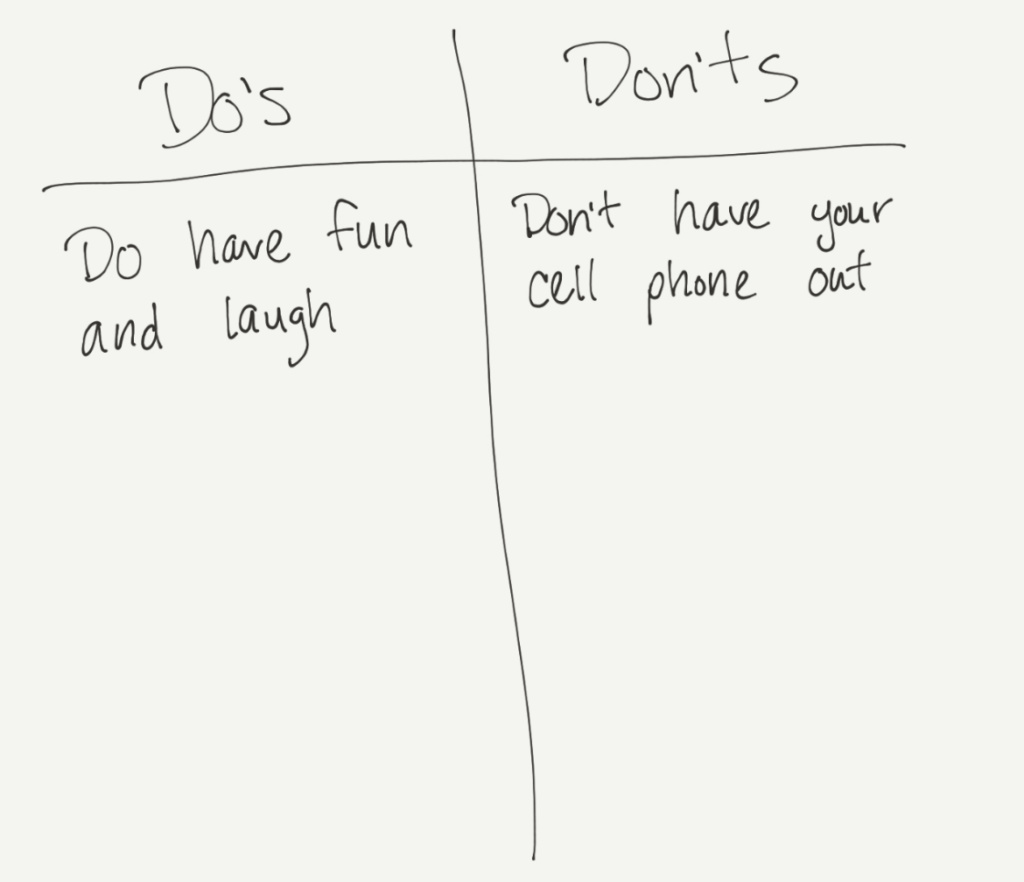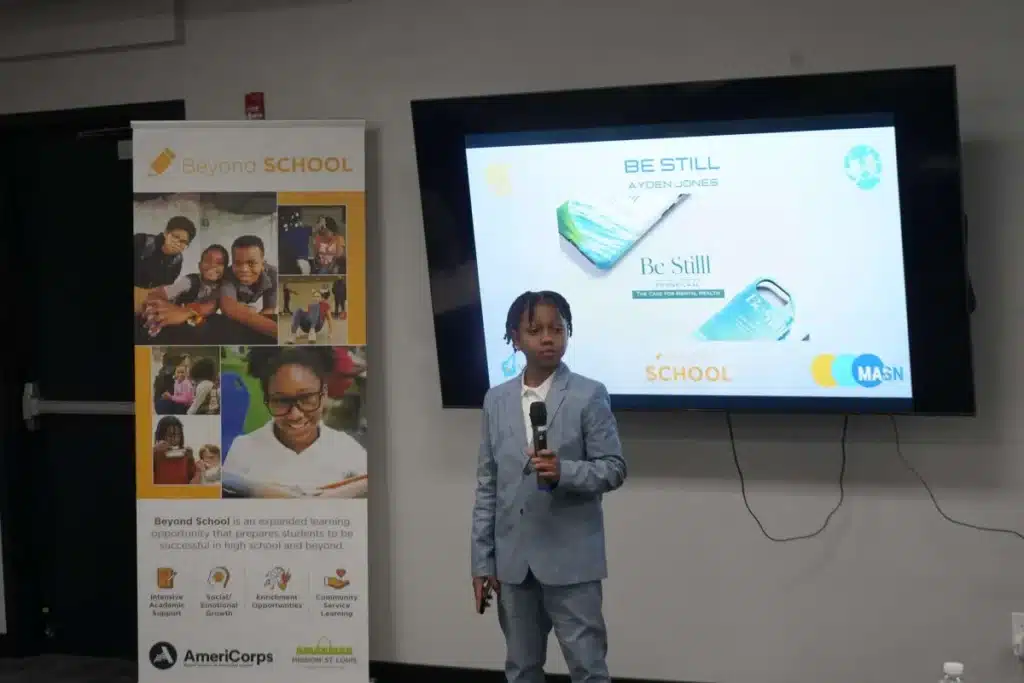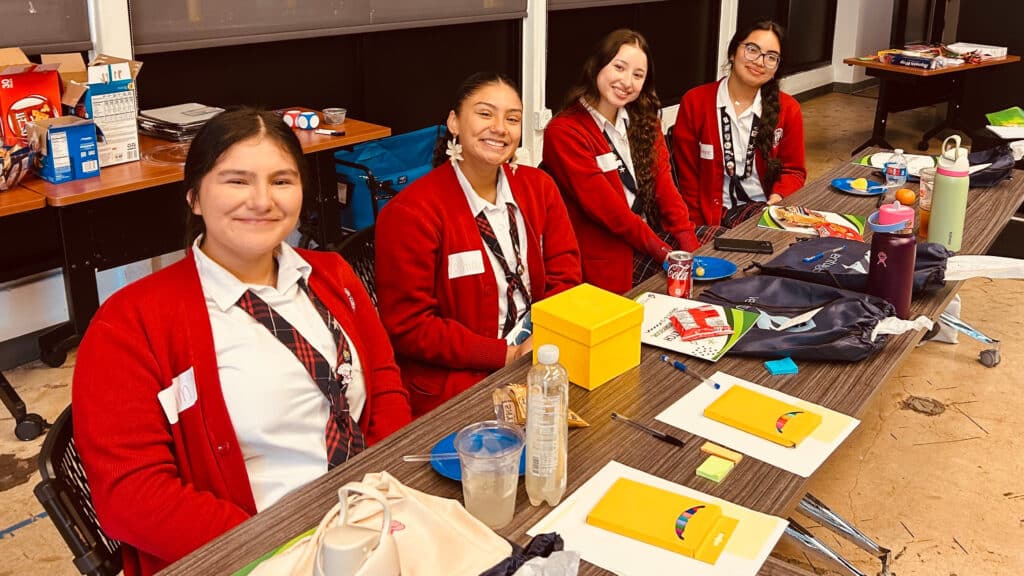Incorporating entrepreneurial learning into your classroom can ignite creativity, foster critical thinking, and equip students with essential skills for success in our ever-changing world.
To set your classroom up for success, it is essential to:
- 1. create expectations together
- 2. build strong relationships
- 3. model the entrepreneurial mindsets
Let’s explore three ways to engage and empower your students when you teach entrepreneurship.
1. Set Expectations and Group Norms Together
To create a positive and productive learning environment, involve your students in setting expectations and establishing group norms.
This is a crucial “Day 1 activity”. It establishes the dynamic of your classroom.
By including students in the process of creating classroom climes, you’re sharing authority AND responsibility. Your students will help each other and hold each other accountable for their behavior and learning outcomes.
As you involve students in this process, you foster a sense of ownership and responsibility. To reinforce these expectations, briefly review them at the beginning of each class, reminding everyone of what has been agreed upon.
By setting expectations together, students learn the importance of collaboration and empathy, which are key values in entrepreneurship.
ACTIVITY IDEA: Do’s and Don’ts
1. Divide students into groups of 3-4.
2.Have each group create a list of the top 3 “Do’s and Don’ts” for a successful learning environment.

3. Encourage open discussions within each small group. Have students take turns to practice collaboration and perspective taking.
4. Bring everyone together. Reach a collective agreement on a classroom set of norms.
2. Get to Know Your Students
Invest the time upfront and get to know your students. You will learn information that is essential for classroom management and spark engagement.
Begin by practicing the entrepreneurial mindsets of curiosity and empathy by asking yourself about each student:
WHO are you?
WHAT motivates you?
WHY do you do the things you do?
To find the answer to these questions, use the online VentureLab’s Mindset card generator. It provides activity and discussion prompts.
Cards can also be printed! The Mindset Cards, or other ice breaker activities, provide valuable insights that can be used as inspiration for potential business ideas. If students ever reply with the classic line of “I don’t know what to do,” you’ll know enough about them to make relevant suggestions.
Investing time in getting to know your students builds a relationship based on trust and respect. You will create a supportive and inclusive learning environment.
ACTIVITY IDEAS: Mindset Discussions
Game 1: Either the entire group or each player is given 1 card. Players take turns to read the mindset definition and answer the question on the card.
Game 2: Either the entire group or each player is given 1 card. Players take turns to read the mindset definition and explain how they have recently used that mindset.
Game 3: Each player is given 2 cards and explains how the mindsets are in some way connected. (If the two cards both have the same mindset, swap a card!)
Game 4: Each player is given 1 card. An extra card is then presented to the group. Each player must explain how their mindset card is in some way connected to the extra card.
3. Model the Mindsets
We’ve given you two activities to set your classroom up for success…but remember… You are a learner just like your students, not just the teacher.
You have to model the ways of thinking and acting that you want to see in them.
YOU have to model that confidence, courage, empathy, and problem solving…ALL of the mindsets of an entrepreneur!
When you view yourself as a life-long learner, strengthening and growing your own entrepreneurial thinking, you bring that back to your students.
Learn from other educators and practice modeling entrepreneurial mindsets with our Entrepreneurial Mindsets for Educators course.
ACTIVITY IDEA: “The Power of Yet”
1. Brainstorm a list of personal or professional challenges or goals you would like to work on.
2. Select one challenge or goal and create a challenge statement that includes the word ‘yet’ at the end. Use a sentence stem below or create your own.
I want to (insert challenge or goal), but I don’t know how, yet.
I need to (insert challenge or goal), but I’m not there, yet.
3. Next, visualize the future moment when you’ve succeeded in overcoming the challenge, solved the problem, or achieved the goal.
4. Create a quick sketch or write a brief description of that future moment of success.
5. Finally, brainstorm actions you can take to get there!
Conclusion:
Incorporating entrepreneurial learning into your classroom requires intentional efforts to:
- set expectations
- build relationships
- model the mindsets
By involving students in setting expectations, getting to know them on a personal level, and modeling the mindsets for them, you create a vibrant entrepreneurial learning environment. Students will thrive, develop creativity and critical thinking, and be prepared to navigate the challenges and opportunities of the future with an entrepreneurial mindset.




